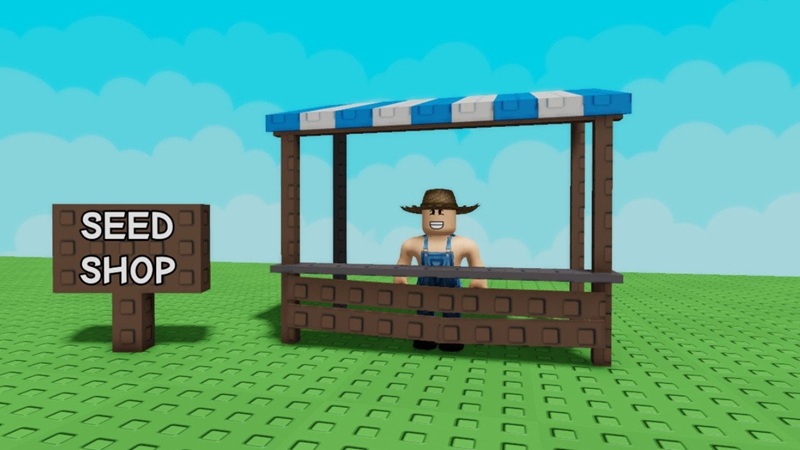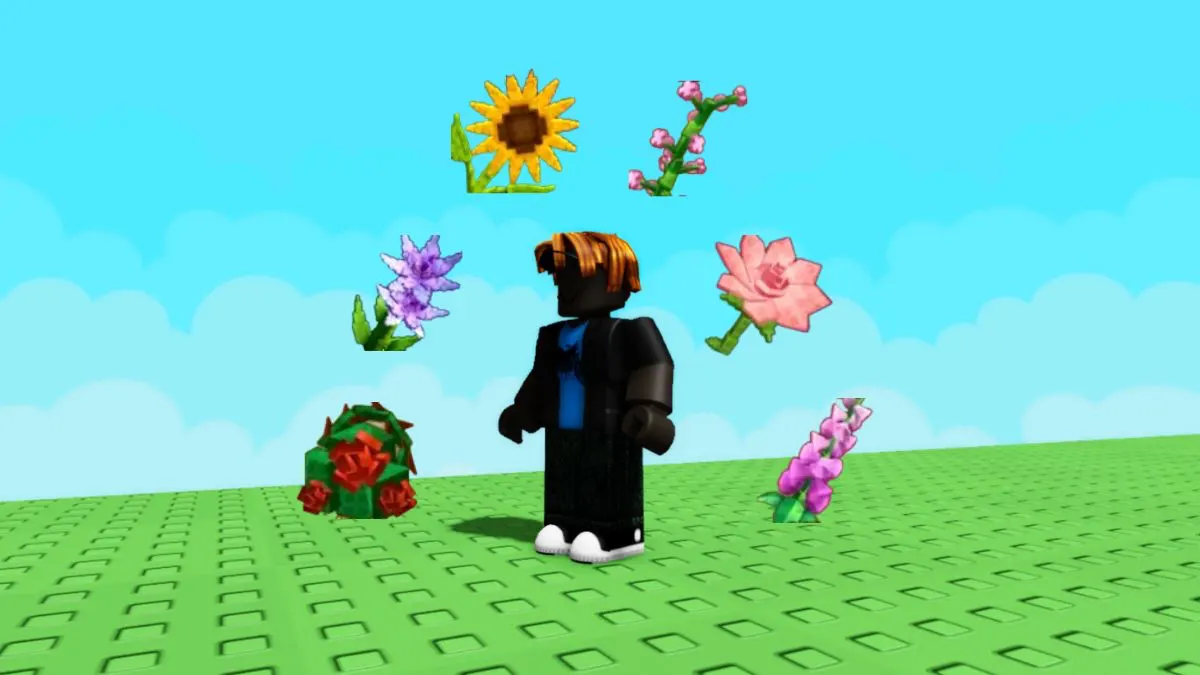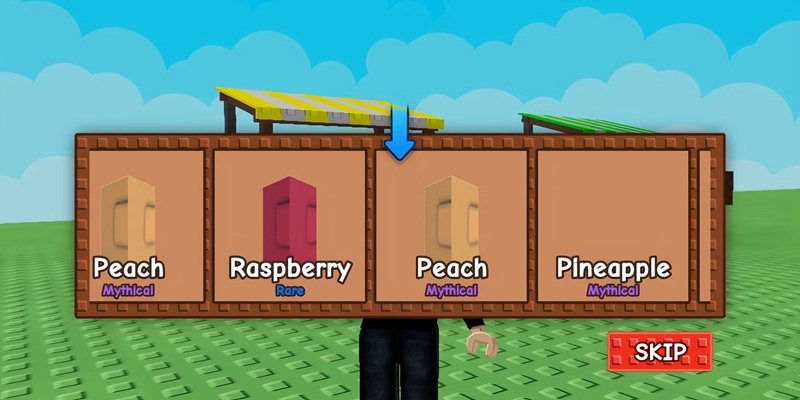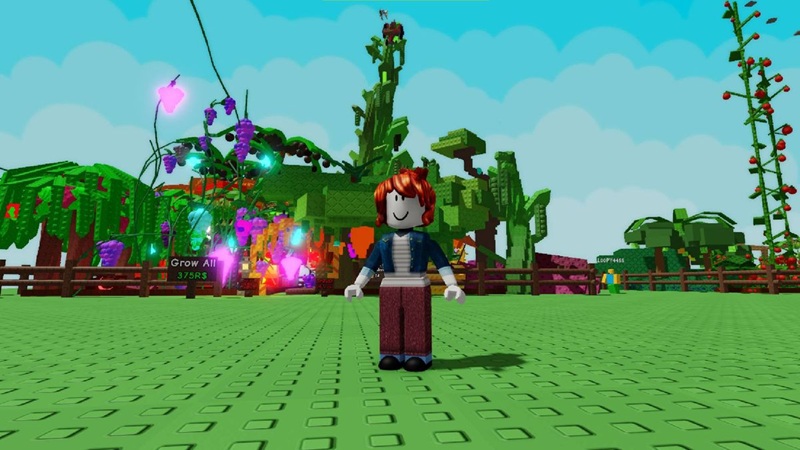Last updated on September 15th, 2025 at 09:29 pm
Grow a Garden on Roblox is a farming simulator where choosing the right seeds can make your garden flourish.
This guide provides a comprehensive look at seeds – how they work, which ones offer the best value, and how to plan your planting strategy.
We include a full tier list of crops (S through F tier) ranked by overall value (profit per harvest, mutation potential, and growth efficiency).
Whether you’re a beginner or experienced player, read on for seed recommendations, event-exclusive plants, and tips to maximize profit.
Understanding Seeds in Grow a Garden
What Are Seeds?
The name says it all. Seeds in Grow a Garden are exactly like real world seeds. You plant them on your far, they grow into crops (fruits, vegetables, flowers, etc.) and you harvest them and sell them for profit. It’s as easy as that.
Seeds in Grow a Garden can be bought using Sheckles (in-game coins) or sometimes a special currency (like Honey or event tokens).
But, there are certain things which makes Grow a Garden Seeds and Crops a bit different.
Well, some crops and plants yield a single fruit and then disappear (single-harvest crops), while others continue producing multiple fruits over time (multi-harvest crops).
Multi-harvest plants (like trees or certain flowers) are especially valuable because they can be harvested repeatedly without replanting.
How to Get Seeds:
You will have procure seeds from the Seed Shop NPC in town. You can easily visit and buy seeds for you.

But, here’s a catch!
In the Seed Shop, you won’t find all the seeds available 24/7. Even the common seeds (like Carrot or Strawberry) show up often and let alone rare seeds (Legendary/Mythical ones) which have even lower probability of appearing.
But, the shop’s stock refreshes every 5 minutes globally, which is the same for all servers, around the world. That means switching servers won’t help if the stock hasn’t been refreshed.
Waiting is the only option!
Another way to obtain seeds is using the Limited Shops or Events, Seed Packs(bundles bought with Robux or earned via codes), or rarely from pets (e.g. the Golden Lab pet can dig up random seeds).
Don’t worry, we have talked about it in detail! Keep reading!
Growth and Harvest:
Once you plant a seed on an empty plot, it will grow automatically over time (higher rarity seeds generally take longer to mature).
You don’t need to water plants to make them grow, but using watering cans or sprinklers increases yield – crops grow larger (heavier) and sometimes in greater quantity.
Heavier fruits sell for more since sale price depends on weight and base value. When fruits ripen, pick them up and use the Sell menu to convert your harvest to Sheckles.
For maximum profit, focus on high-value seeds (those that either sell for a lot per fruit or produce many fruits) and use gear or weather events to boost their output.
Evergreen vs. Event-Limited Seeds
Even if there is time for the stock refresh, you will only find some special seeds available in limited-time events, these are are called Event-Limited Seeds.
And the ones available all year round are called, you guessed it right, Evergreen Seeds.
Evergreen Seeds:
These are the standard seeds and can be procured even in non-event season.
They include common veggies (Carrot, Corn, Tomato, etc.), basic fruits (Strawberry, Blueberry, Apple, etc.), and higher-tier exotics (Cactus, Bamboo, Coconut, Dragon Fruit, Mango, etc.).
Most of farm progress is based on how well you manage your Evergreen Crops. As these are the ones that you can harvest and earn profit.
For instance,
Carrot (Common) costs 10 coins and is a good tutorial crop, while a Mango (Mythical) costs about 100k coins and yields very valuable fruits in late-game. These seeds appear in the rotating shop or in permanent seed packs.
Rare seeds like Dragon Fruit and Cacao seeds have extremely low stock chances – but they are not tied to any specific event.

Event-Limited Seeds:
Game dev keep offering unique seeds via limited-time Event Shop which usually needs a special currency or high coin cost to buy. These seeds often have exceptional base values and buying one can really push your level up!
For instance,
- The Easter 2025 event introduced the Candy Blossom (a multi-harvest candy tree) with a whopping 90,000 Sheckle base price per fruit.
- The Bizzy Bees (June 2025) event added powerful flowers like Sunflower (135k base value) and Honeysuckle (90k).
- The Summer Harvest (June–July 2025) event brought Rosy Delight (115k) and Parasol Flower (200k per fruit). The recent Prehistoric (July 2025) event added seeds like Bone Blossom (175k base, a multi-harvest “dinosaur” flower).
These event crops rank among the most profitable in the game due to their huge selling prices.
So, the best advise would be to always prioritize grabbing event seeds while they’re available, or you will need to wait again for months or trade it with a different player.
Event-Limited Seeds and Crops can massively boost your income if you manage to plant them.
Below we’ll provide a tier list that mixes both evergreen and event seeds, so you can see how they all stack up in terms of value.
SEE ALSO: Grow a Garden Pet Tier List (After Zen Update)- Best Pets List
Complete Seed Tier List (All Crops Ranked)
You can use the table below for a quick reference.
The following tier list ranks the notable seeds/crops in Grow a Garden from S (best) to F (worst) based on overall value.
The parameters that we have covered is – profit per harvest, cost-to-yield efficiency, growth time, multi-harvest capability, and mutation synergy.

| Tier | Seed (Crop) | Notes / Value Highlights |
|---|---|---|
| S | Sunflower (event) | Multi-harvest flower with massive ROI (Return on Investment). With the sprinkler glitch, its yield scales dramatically, making Sunflower one of the most farmed late-game crops. (Base around 135k each) |
| S | Moon Blossom (event) | Limited “Lunar” flower that is multi-harvest. Offers tremendous volume per plant (lots of blooms), rivaling Sunflower in total yield. Extremely high value when fully harvested. |
| S | Candy Blossom (event) | Multi-harvest candy tree from Easter. Yields numerous fruits per harvest and mutates frequently, which keeps it lucrative. Although its base value (90k) is a bit lower than Sunflower’s, the sheer quantity of candy fruits makes it a top earner. |
| S | Lilac (event) | A flower seed from Bizzy Bees. Game-changer for early value – costs only 10 honey but sells for over 30,000 per harvest. It’s multi-harvest and yields great returns for minimal investment. |
| S | Foxglove (event) | Event flower (Bizzy Bees) that also gives huge value: sells for around 14k–18k per pick and is easy to acquire via free seed packs. Multi-harvest, solid profit and essentially free. |
| S | Beanstalk | The legendary Beanstalk crop. Incredibly expensive seed (10 million coins) but each bean fruit sells for around 20k. It’s favored for glitch strategies – players scale Beanstalk yields to absurd levels via game exploits. In normal play it’s still strong but shines mostly in late-game combos. |
| S | Ember Lily | A high-tier flower (permanent seed) known for high sale value and easier acquisition than Sunflower. It’s a strong end-game crop, especially if you missed event seeds. |
| S | Honeysuckle (event) | Another Bizzy Bees flower that outperforms Ember Lily in consistency. Multi-harvest with great yield and not too hard to get during its event. Offers reliable, high profit per cycle. |
| A | Rose (free seed pack) | A free flower from basic seed packs. Sells for around 4,800 per bloom. Great for beginners – easy to get and decent profit for no cost. |
| A | Dragon Fruit | A mythical fruit that costs only 50 coins in shop! Sells for around 4,200 each, making it the best low-cost, high-return fruit in the game. The catch is it’s super rare in the shop, so grab it when you see it. |
| A | Cactus | Cactus seeds cost 15,000, but each cactus fruit sells for around 3,600. Importantly, cactus regrows fast (multi-harvest) so it pays for itself quickly. A sturdy mid-game crop. |
| A | Cacao | A very expensive seed (2.5 million coins) with around 9k–10k base sale value. The ROI is steady, not explosive – but Cacao fruits are used for quests and yield good cash over time. A strategic late-game investment for steady income. |
| A | Mango | A mythical tree (multi-harvest). Well-balanced: moderate-high sell price (around 6.5k base) and decent fruit count. Mango isn’t the absolute top earner, but it’s versatile and has high mutation potential (mangoes can mutate into super valuable forms – see mutation section!). |
| A | Nectarine (event) | Limited fruit from Bizzy Bees. Very high yield per fruit (around 31k each). Its seeds cost event currency but it’s worth it – Nectarine trees produce lots of juicy profit. |
| A | Hive Fruit (event) | Another Bizzy Bees special. A bizarre multi-harvest fruit with an extremely high base value (around 45k). Great for late-game money, though obtaining the seed required the event. |
| B | Apple Tree | A classic fruit tree (legendary rarity) that yields 5–8 apples per harvest. Apples sell for around 27 coins each, which is modest, but the volume of fruits makes Apple trees solid mid-game profit cyclers. They also appear in some quests, adding utility. |
| B | Bamboo | A quirky multi-harvest crop. Bamboo’s value per shoot isn’t fixed (depends on weight), but it shines with mutation stacking. If you apply multiple mutations (e.g. Wet + Sandy = Clay, etc.), Bamboo’s selling price skyrockets. Optimized bamboo farms can surprise you with high returns. |
| B | Tomato | A rare-tier crop that costs 800 and sells for around 27 each. By itself one tomato plant isn’t impressive, but Tomatoes grow quickly. Planting them in bulk can give steady income mid-game. (Without using glitches, tomato is just average, so it falls in B-tier.) |
| B | Lavender (event) | A Bizzy Bees flower. It has a decent sell price but only yields one harvest per seed (single-bloom). Because it doesn’t regrow, Lavender’s overall output is limited, keeping it out of higher tiers despite being “Rare”. |
| B | Purple Dahlia (event) | Another Bizzy Bees flower. It looks nice and sells moderately well, but has a low drop rate (few flowers per plant). Good for decoration or collection, but not a top money-maker. |
| C | Strawberry | Your best friend in the early game. Costs only 50 coins and gives multiple strawberry fruits selling around 14 each. The profit per batch isn’t huge, but Strawberries are renewable and scale well when you plant many. Excellent for learning and compounding small gains. |
| C | Raspberry | A free seed (rewarded from certain quests). Unfortunately, its fruits have very low sell value. You won’t lose money (since it’s free), but the profit is negligible – use raspberries only if you have no alternatives or for collection. |
| C | Peach | A rare fruit that mainly comes from seed packs (hard to obtain). Despite being rare, peaches sell for very little. They’re simply not worth farming beyond filling out your garden variety. |
| C | Watermelon | A legendary crop (summertime favorite) that sells decently per melon, but doesn’t scale well into mid-game. Watermelons are one-time harvests and require replanting, so the effort-to-profit ratio is just average. Fun to grow, but you’ll replace them later. |
| C | Pineapple | Often obtained free from certain seed packs. Pineapples have a fair sell price (around 1,800), but each seed gives only one pineapple. It’s a quick cash injection if you get seeds for free, yet as a one-and-done crop it won’t sustain your farm’s growth. |
| C | Pear | Another occasional freebie (from packs). Sells for only around 500. Like pineapple, it’s okay for quick sale, but underwhelming yield overall. You’ll outgrow pears very fast. |
| D | Carrot | The starter common crop. Costing 10 coins, carrots are fine for the tutorial phase but have poor scaling – their sale price stays low and they don’t benefit much from mutations. Replace with strawberries or better as soon as you can. |
| D | Daffodil | A common flower (often in stock). It has a low selling price and doesn’t stand out in any way. You might grow a few for quest requirements or looks, but profit-wise daffodils disappoint. |
| D | Pink Lily (event) | A limited Bizzy Bees flower with a steep cost and single bloom. Essentially, you pay a high price for one pretty lily. Not financially sensible to farm – it’s more of a collectible or for decorating your plot. |
| D | Cherry Blossom | A special tree that is currently unobtainable (was perhaps an event or scrapped content). Since you can’t get it normally, it has no value for your farming progress. (If it ever becomes available, it might have niche use, but until then it sits at the bottom.) |
| D | Tomato (without glitch) | Listing tomato again here to stress a point: without the sprinkler or replant glitch exploitation, tomato’s ROI is mediocre. It’s outclassed by many other crops by mid-game. (Tomato’s B-tier if you mass-plant it or use glitches; otherwise, consider it D-tier.) |
| F | Blueberry | The trap crop for newbies. Blueberry seeds cost 400 coins but each berry sells for only 18 – a massive loss in investment. Unless you have some strange mission to grow blueberries, avoid planting these. They will drain your funds. |
| F | Corn | Universally regarded as the worst plant in the game. Corn seeds cost 1,300 and yield a single corn worth a pitiful 36 coins. That’s right – you lose over 90% of your money on each corn harvest. Only grow corn if a quest absolutely demands it (and even then, cringe through it). |
- A-tier – Seeds are excellent in the interim, providing strong returns (some at low cost like Dragon Fruit).
- B-tier – Decent options for mid-game or secondary crops, but they won’t earn you much coins on selling.
- C-tier – Mostly beginner fillers or freebies – useful at first, but replace them as soon as you can.
- D-tier and F-tier – These crops should be avoided. But, if you are new to the games you can try them for learning.
Always consider multi-harvest capability and ROI (sorry for using this business term, but ROI is Return On Investment): a plant like Sunflower might seem expensive upfront but will out-earn dozens of cheap carrots in the long run.
SEE ALSO: Grow a Garden Codes Roblox (2025) – Free Watering Cans, Fertilizers & More!
Best Seeds for Each Stage of the Game
As you progress, the “best” seed choices change. Even if you try, you won’t be able to buy the best yielding seeds at the starting of the game, so, the definition of best seed is different for you. And it changes as your game progresses.
Here are recommendations for early, mid, and late game to help you plan your garden:
Early-Game
When you’re just starting, just focus on low-cost seeds with reliable yields. Do not worry if you can’t but high yielding one.
Your goal is to learn the mechanics and build a coin base without going broke by buying a rare seed.
-
Strawberry: Seeds only cost 50 coins and you can harvest them multiple times, selling each berry for around 14 coins.
-
Carrot (for tutorial missions): Carrot seeds cost 10 coins. Use them to learn the basics and complete any starting quests and unlock strawberry seeds.
-
Blueberry (with caution): Blueberries are introduced early, priced at 400 coins per seed yielding only 18 coins per berry. Try planting only a couple of them.
Focus of volume when you are just starting your journey and not value.

Mid-Game
After learning all game mechanics, you should start aiming for crops listed in high tiers – “Rare” and “Legendary” crops/seeds.
-
Tomato: Each tomato seed is 800 coins and yields a tomato worth around 27. Setup a grid of this fast growing crop to generate a steady stream of income without too much cost risk.
-
Orange Tulip (for balance): Orange Tulips are a nice mid-tier crop. They aren’t top-tier profit, but they provide a decent yield – kinda – “looks good, pays okay.” And yes, it make your farm look vibrant.
-
Corn (only for quests): Corn is terrible for profit but if a mission asks for it, plant a couple to get it done.
-
Cactus: Very good crop to invest in, yields 3.6k per harvest and regrows quickly. Once you can buy one or two cactus seeds, they’ll start paying back steadily.
-
Apple Trees: Apple only appears 17% of the time in shop stock. If you can, buy them at ~3,250 coins. Each apple tree keeps giving 5–8 apples at ~27 coins each. Good passive income.
In mid-game, you just need to balance profit and expansion. Focus on replanting fast-yield crops (tomatoes, etc.) for routine cash, and reinvest your profits into a few high-value seeds like Cactus, Dragon Fruit, or Coconut.
Yes, Dragon Fruit is pretty hard to get, but procure it as soon as you can!
Late-Game Strategy
Once you are warmed up, it’s time to procure Mythical and event seeds, the late-game is all about efficiency, profit per plot, and advanced mutation farming.
- Pumpkin (High-Payout Crop): Pumpkins are Legendary, one-time harvest crops with a great coin return.
- Apple & Coconut (Passive Earners): Apple trees, as we discussed above, is a great option for steady income. And coconut tree is pretty similar, but focus on scaling with mutations. (…Hey Hey don’t worry! We have discussed about Mutation in our next section. Keep reading!)
- Event Seeds (Max ROI with Tools & Pets): S-tier seeds like Sunflower and Candy Blossom shine in late-game. Use tools like sprinklers or weather gear to exploit glitches or trigger mutations.
- Sunflower: Can be glitched for massive yield.
- Candy Blossom: Works well with mutation pets. Stack boosts (weather, pets, gear) for maximum output.
- Mushroom (High Risk, High Reward): Comes with a high cost and isn’t profitable unless mutated (e.g. Shocked or Rainbow).
Mutations and Special Rare Plants
Grow a Garden get more exciting as you progress. One of the very interesting feature is the Mutation.
These are the special transformation that can change crop’s appearance and multiplying its value dramatically. And if you use the mutation correctly and efficiently, you can get a 50x, 100x price of a harvest, even for a low-level seed.
But, the thing is mutations can randomly or conditionally occur. So, things are a bit uncertain here. But, we will try our best to explain about mutation in our detailed guide and highlight some famous high-value mutated plants, like the Golden Apple, Celestial Melon, and Paradisal Mango.
SEE ALSO:
How Mutations Work in Grow a Garden
While your crops grow, they can randomly mutate based on conditions like weather, tools, or pet abilities.
Each mutation adds a multiplier to the crop’s value.
Some are common (like Wet at 2× from rain), while others are rare (like Rainbow at 50× or Celestial at 120×). Mutations can stack for huge profits, and advanced players often chase them using gear or pets.
Late-game strategy revolves around creating “mutation farms” for maximum Sheckles.
Top Legendary Mutated Crops
1. Golden Apple (20×)
Apples have a 1% chance to become Golden, multiplying their value by 20.
Dragonfly pets can apply this mutation too. Use golden fertilizer or pets to increase odds.
2. Celestial Melon (120×)
Watermelons or Moon Melons turn Celestial during rare Meteor Shower events.
The fruit becomes glowing and sparkly, with a 120× price boost. Requires precise timing or admin tools.
3. Paradisal Mango (100×)
One of the best crops in the game. To get this, a Mango must first be Verdant (4×) (via Scarlet Macaw or Solar Flare), and then Sundried (85×) (via Heatwave or Tanning Mirror).
These combine into Paradisal automatically. Difficult to achieve, but massively rewarding.
4. Shocked Fruits (100×)
Crops like Dragon Fruit or Mango struck by lightning during Thunderstorms become Shocked.
These are bright blue and extremely valuable.
5. Rainbow Fruits (50×)
Very rare (0.1% chance) and glow with cycling colors.
Best obtained using the Butterfly pet, which converts a highly mutated crop into a Rainbow version (removes other mutations though).
Tips to Trigger More Mutations
Use Pets: Dragonfly (Gold), Bee (Pollinated), Butterfly (Rainbow), Polar Bear (Frozen), etc.
Gear Up: Sprinklers (Honey Glazed), Tanning Mirrors (Sundried), Lightning Rod (Shocked), etc.
Time It Right: Plant during Blood Moons, Meteor Showers, Thunderstorms, or Solar Flares.
Stack Small Mutations: Wet (2×) during rain, then Frost to make Frozen (10×). These stack and can lead to bigger effects.
Compost Wisely: Mutated fruits can be composted for a chance to boost future mutations.
Event Bonuses: Watch for events like Chocolate Rain (Choc), Solar Flare (Verdant), and seasonal boosters. They make mutation farming easier.
Farming and harvesting in Grow a Garden is similar to the real world farming in many aspects. You need to plant carefully, harvest carefully, and create a strategy for maximum profits from a piece of land.
Hope this guide helped in understanding seeds, crops, their different tiers and Mutation as well.
It’s time to dive into the game now. Happy Farming!

Hi, I’m Ankit Kumar, the founder of StealthyGaming. I handle everything from SEO to researching and writing gaming articles. I’m passionate about helping fellow gamers stay updated with the latest tips, guides, and news. When I’m not optimizing content, I’m probably testing out new games or digging into strategies to make my articles as helpful and engaging as possible.

